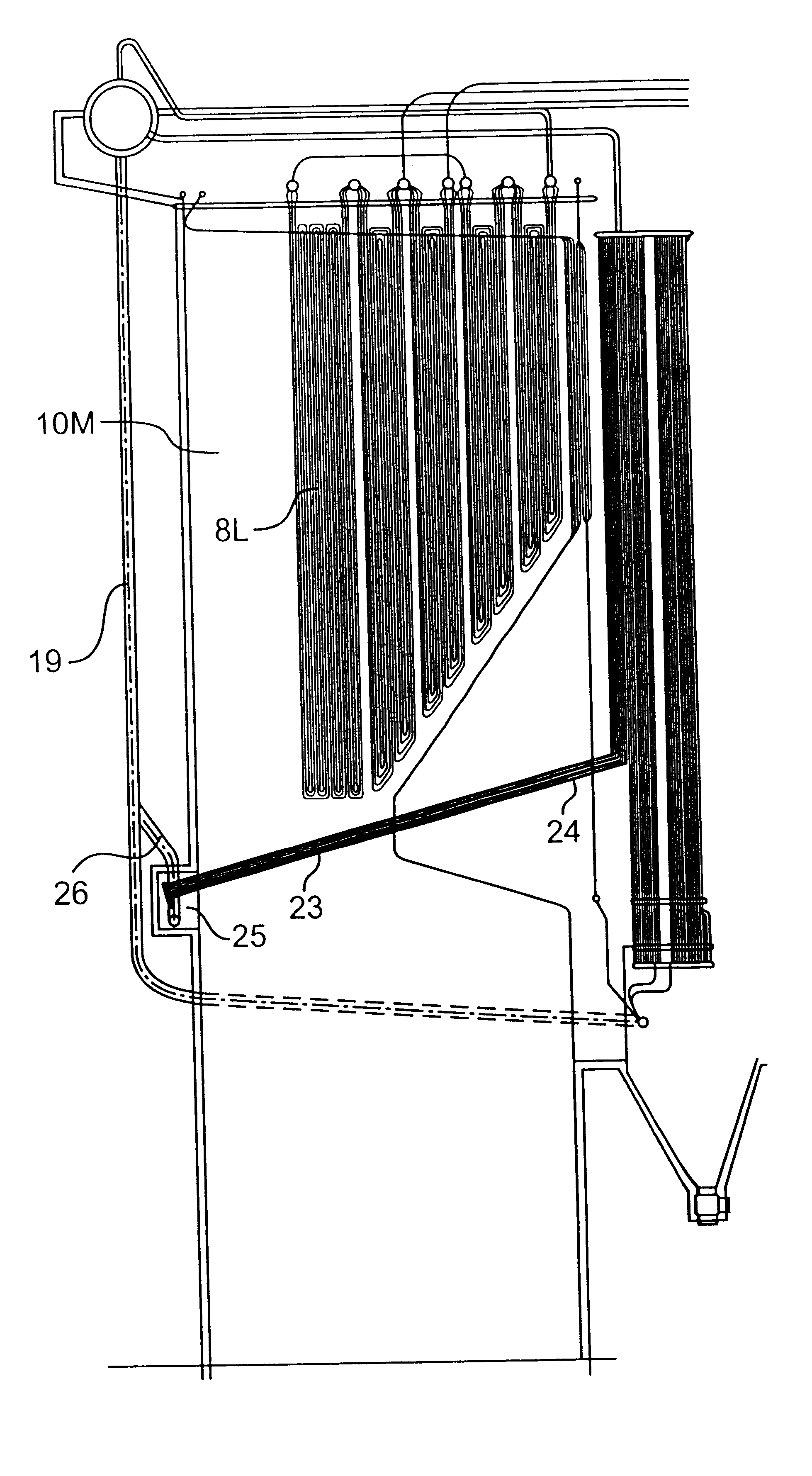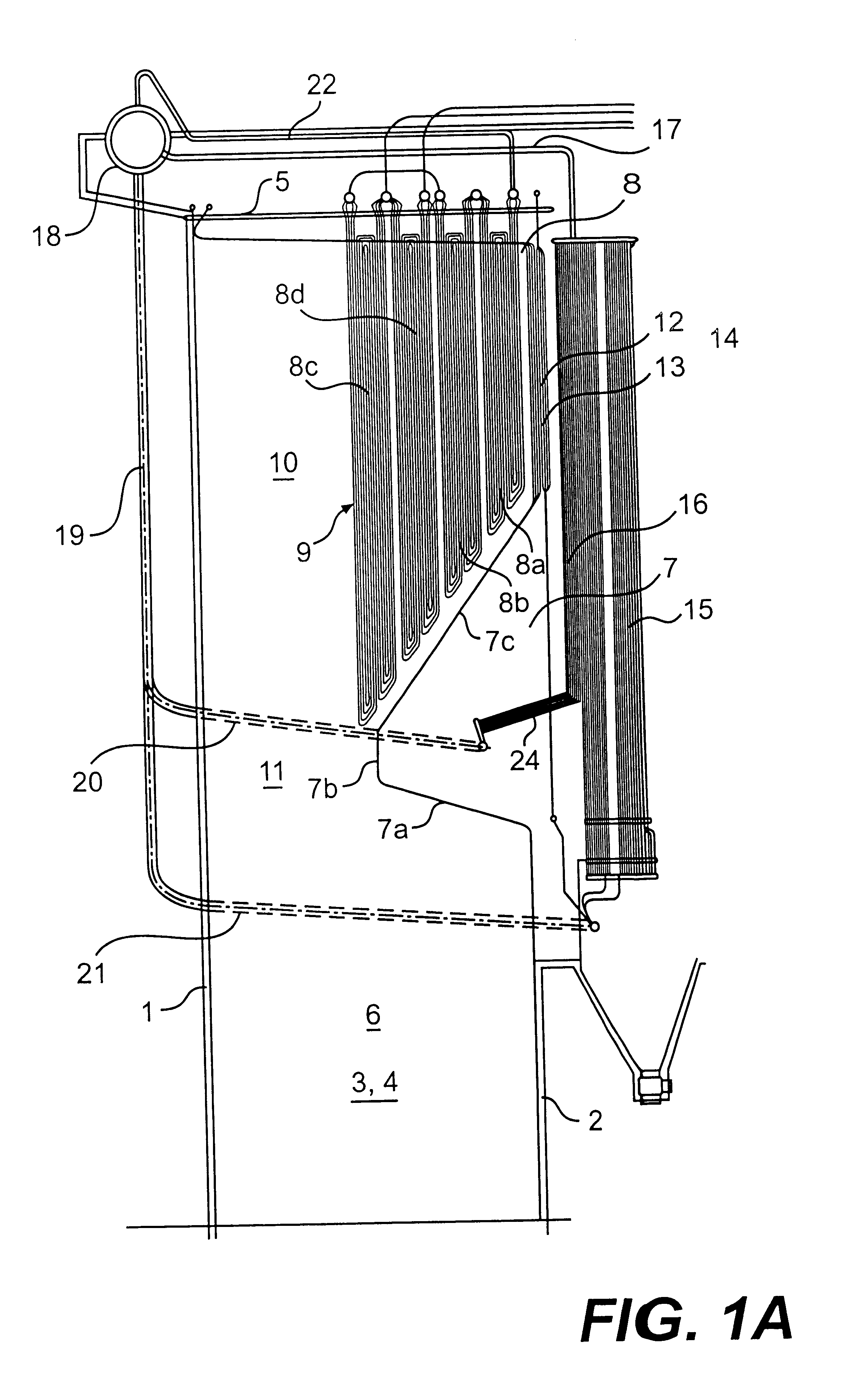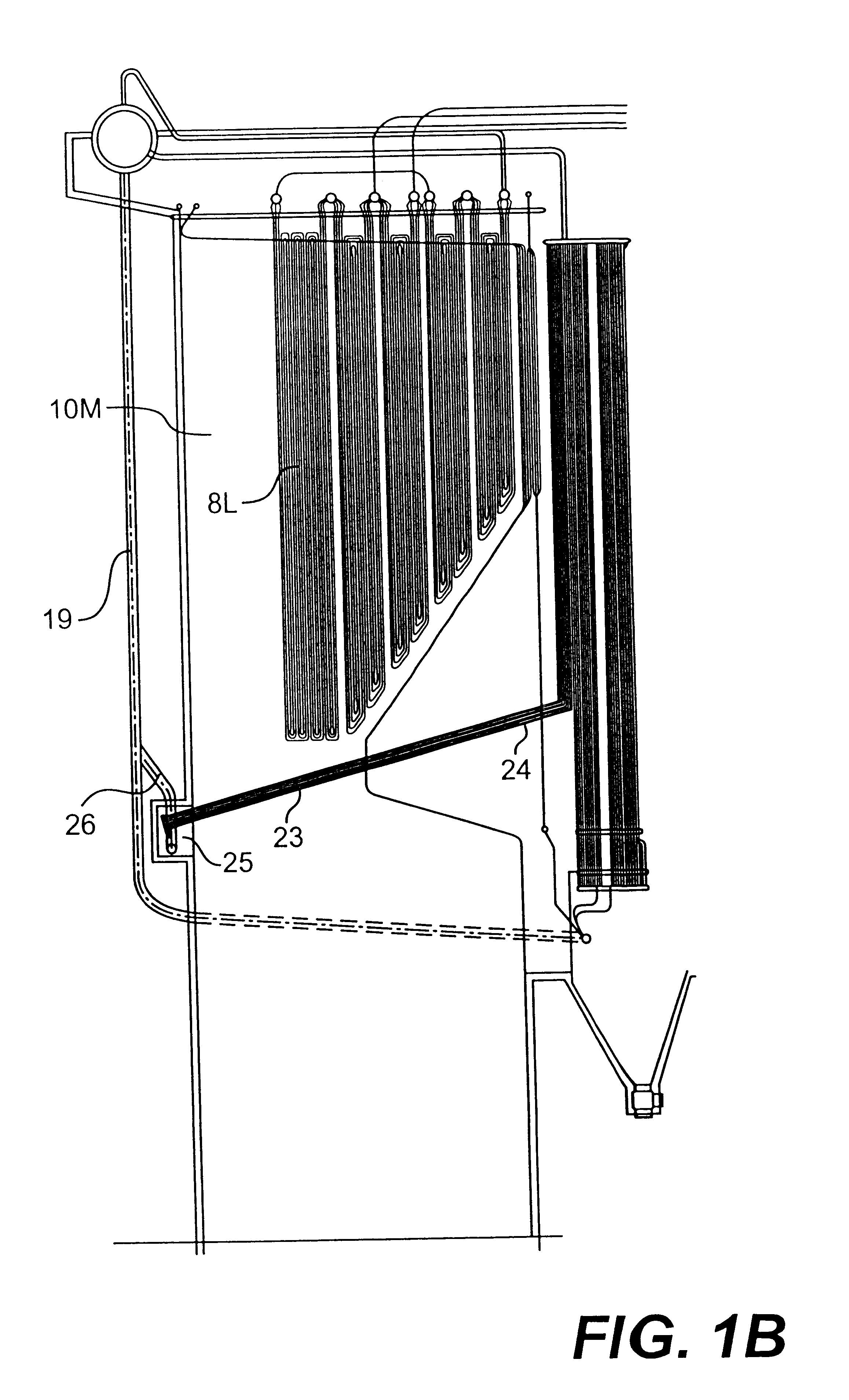Method for upgrading a boiler
- Summary
- Abstract
- Description
- Claims
- Application Information
AI Technical Summary
Benefits of technology
Problems solved by technology
Method used
Image
Examples
Embodiment Construction
With reference to the drawings, the boiler, particularly chemical recovery boiler, according to the invention, comprises a front wall 1, a rear wall 2, and side walls 3, 4, as well as a roofing 5. The upper part of the furnace 6 is provided with a nose arch arrangement 7 and basic superheater arrangement 8, and an open space 10 between the front wall 1 and the front edge 9 of the basic superheater arrangement 8, limited in the side direction by the side walls 3, 4 of the boiler, in the upper direction by the roofing 5 of the boiler, and being at its lower edge in contact with the furnace 6 through an opening 11 limited by the tip of the nose arch arrangement 7b, the front wall 1 and the side walls 3, 4.
In connection with the rear edge 12 of the basic superheater arrangement 8, there is a so-called grid-tube system 13, through which the flue gases are transferred to a flue gas pass 14 accommodating in a so-called boiler bank area riser tubes 15, 16, some of which, namely the riser tu...
PUM
| Property | Measurement | Unit |
|---|---|---|
| Fraction | aaaaa | aaaaa |
| Area | aaaaa | aaaaa |
Abstract
Description
Claims
Application Information
 Login to View More
Login to View More - R&D
- Intellectual Property
- Life Sciences
- Materials
- Tech Scout
- Unparalleled Data Quality
- Higher Quality Content
- 60% Fewer Hallucinations
Browse by: Latest US Patents, China's latest patents, Technical Efficacy Thesaurus, Application Domain, Technology Topic, Popular Technical Reports.
© 2025 PatSnap. All rights reserved.Legal|Privacy policy|Modern Slavery Act Transparency Statement|Sitemap|About US| Contact US: help@patsnap.com



